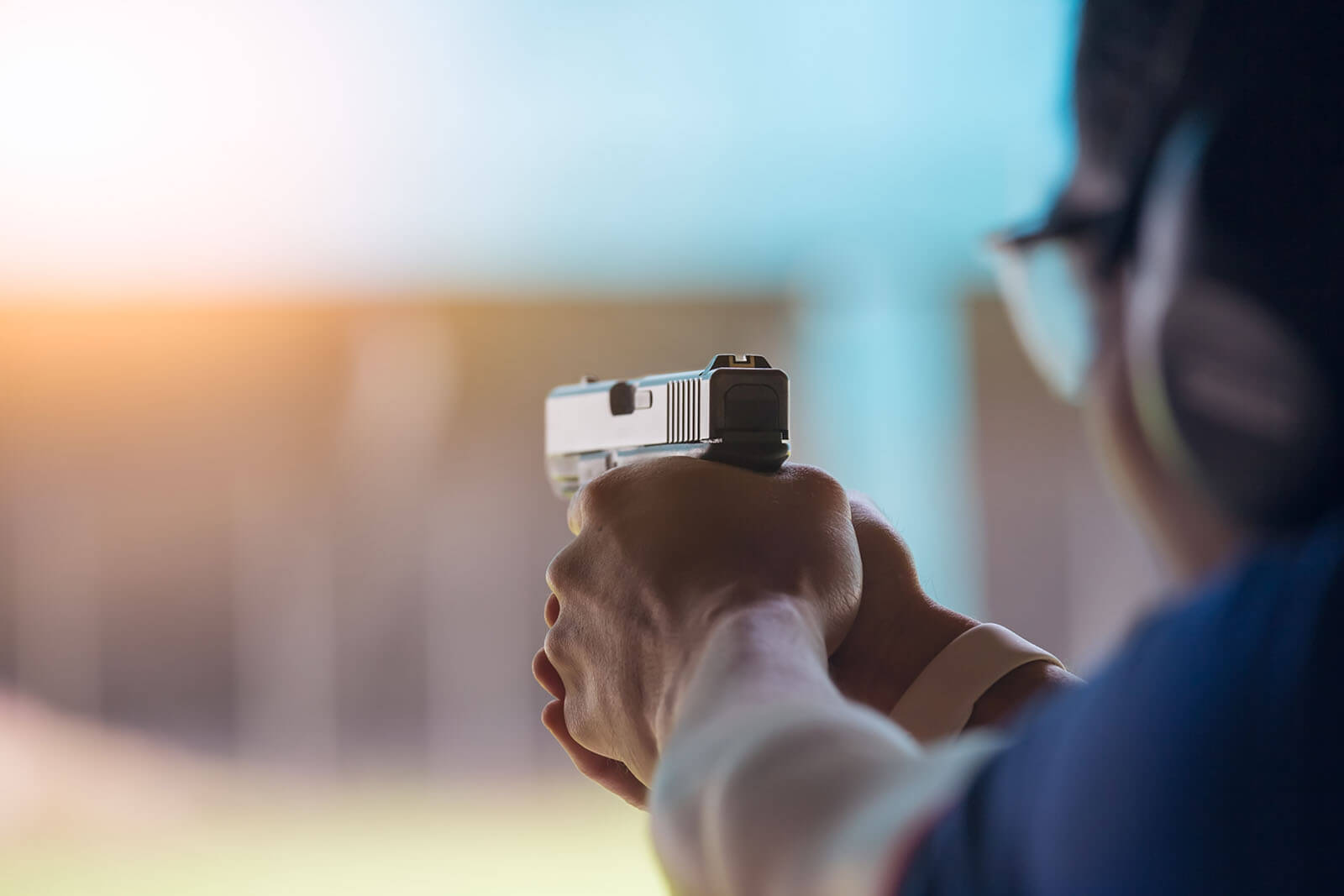The right ammunition choice when it comes to self-defense is high performance jacketed hollow points. You want to stop the attack as quickly as possible with ammunition that reliably performs. Ammunition must penetrate at least 12 inches and expand at least 1.5 times the original diameter. For the average person or new gun owner to test on their own, this is foreign and unrealistic. Instead, rely on testing done by third parties who specialize in producing this type of performance information. The one variable not often available is how reliable ammunition and firearms are together. Since there are so many combinations, it is not practical to rely on third parties to produce this information. The responsibility for reliability testing falls on the end user. Here is a simple 50-round test designed specifically to evaluate the pistol, magazine and ammunition for compatibility.
In other articles we’ve talked about the importance of ammo selection, but the testing protocol was not discussed in detail. If you recently purchased your first pistol for self-defense, chances are it is still clean and shiny. Some might suggest a break-in period for your new pistol. Modern pistols are incredibly reliable requiring little to no break-in. This is not to say you can’t do it if it makes you feel better, but I consider it optional. If you train regularly, you will get that break-in by proxy. If you want to conduct a break-in period, I recommend a 200-round measurement. To be honest, you can fire the 50-round test four times. It might seem boring, but it will accomplish the mission. Before testing the defensive ammunition, the question sometimes comes up whether to clean the pistol. You can look at this from two different angles. On the one hand, if I shoot the 50-round test with a dirty gun, it lets me know if it can handle firing defensive rounds between cleaning intervals. On the other hand, using a clean and dry gun gives you as close to a real torture test one can achieve. My preference is for a clean and dry gun since this is typically the condition of most self-defense pistols.
Preparation & Equipment
You need to prepare for the testing by gathering a few items in addition to all the standard safety gear for live fire. The best targets to use are a bullseye type such as the NRA B8 repair center, widely available online. You will also need some sort of support, such as a range bag. In a pinch, you can use a rolled-up jacket or hoodie. Aftermarket shooting bags are great, but whatever support is used, must ensure that the muzzle extends beyond to protect it from the muzzle blast. A ruler or business card to help measure your group size and marker or pen are also needed. Since we are testing the combination of pistol, ammunition and magazines, it is a good idea to mark the magazines you will use for defense. If all you have are the magazines that came with the pistol, that makes it easy. If you have a collection of magazines, it is a good idea to stencil them so you can easily identify the ones used for defense. Your magazine collection will grow over time and marking or stenciling them is a good idea. If at any point you experience a stoppage—not operator error—you would be wise to question reliability. More than a couple and you should abandon the ammunition.
We break this 50-round testing protocol into three phases: administration, slow fire and rapid fire.
- The administrative portion is used to evaluate the proper functioning of the magazine with the ammunition. They should load, unload and lock the slide open after the last round fired and or ejected.
- The slow fire portion is used to evaluate the precision of the ammunition and pistol. Together they should produce a tight group of about two to four inches repeatedly.
- The rapid fire portion is testing the reliable cycling of all three under realistic firing conditions, when pushed to the maximum limits, is the highest rate of fire.
Proper Functioning & Cycling
The administrative phase is simple, but before we go any further, all three test phases must be conducted at a range with the muzzle pointed in a safe direction. Ensure the pistol is unloaded by following all safe, gun-handling procedures. With the action closed, insert an empty magazine and cycle the action. The slide should lock to the rear. If it does, remove the magazine, close the action and repeat twice for each magazine. If the magazine fails to lock the action, open inspect the magazine for any debris. If none present, it may signal a problem with the magazine and should be used for training purposes only. The second part of the administrative phase is to load one live round into the magazine. Then with the pistol pointed in a safe direction, cycle the action to load the pistol. With the muzzle still pointed in a safe direction, cycle the action to eject the live round. This round should be forcefully ejected and the slide should remain locked to the rear. Repeat this process with all magazines. This function check of sorts will clear the path for the rest of the phases.
The Tighter the Better
The second phase of this testing protocol is slow fire. This phase will also vary due to different marksmanship skills. Even if you have poor marksmanship skills or still learning, it is a good test. You will fire four groups of five rounds each and measure their overall size. Ideally you will want to conduct this test at the 25-yard line, but if your range doesn’t support this distance or your marksmanship skills are still developing, then conduct this test at the 10-yard line. If you are shooting at the 25-yard line, your goal is the tightest group. A four-inch group is a good goal. If you are conducting this test at the 10-yard line your goal should be two inches. While it would be ideal if your group was over the X-ring, it is not the purpose of the test. We are testing precision and not accuracy. Precision means repeatability or how close the measurements—or in this case—the bullet holes are to one another.
To start the test, load the pistol with a magazine of five rounds. With the target placed at the designated distance, assume a supported position. From there, you will want to apply the marksmanship fundamentals, paying particular attention to aiming, trigger control and follow-through. A word on aiming—if it is hard to see the exact center of the X ring, you can use a six o’clock hold, which means to align the sights at the bottom of the aimpoint. If you are using the B8 target, place the aligned sights at the bottom of the black or 9 ring. This will help ensure a consistent aimpoint. Take a couple of deep breaths, and while focused on your sights, squeeze the trigger slowly to minimally disturb the sights. After the shot is fired don’t look at the target; instead, start the aiming process again. Repeat this process until you’ve fired all five rounds. When safe, measure the group size. Ignore the flyer, if any, then draw a line to connect each of the bullet holes to form a perimeter. Using the ruler, measure the overall size and write it on the target. Repeat this process three more times. Average the group sizes for the overall group size average with this ammunition. This phase will be good to revisit down the road as your skill improves.
Fire As Fast As You Can
The rapid-fire drills are the final phase of this testing protocol. Believe it or not I suggest you don’t use a target for this phase. That’s right, you are going to fire all these rounds into a safe backstop only. The reason is to ensure you are shooting as fast as possible to test the combination. Not so much accuracy as speed. Perform this phase of the test at the five-yard line to ensure all rounds are captured by the backstop. Even though we are pushing the limits with speed, we want to go only as fast as we can while staying in control. Load the first magazine with 10 rounds, then load the pistol and assume an aggressive shooting stance. Aim into the backstop and when ready fire two rounds as fast as possible, the good ol’ double tap. Perform five repetitions of this drill for 10 rounds total. Then load your magazine with five rounds. Follow the same process of assuming an aggressive stance aimed into the backstop. When ready, fire all five rounds as quickly as possible. You will repeat this drill twice for 10 rounds total. The final drill will be to load the magazine with 10 rounds. When ready, fire all 10 rounds as fast as possible. Perform this drill once for a grand total of 50 rounds fired. Reliability is not the only outcome we gain with this phase. You get to see the recoil at full speed as well as the muzzle flashes.
By the end of this testing protocol, the reliability question should be answered. It did come at a cost, literally. You need to buy an extra box of ammunition, but peace of mind is a small price to pay. Testing your defensive ammunition is an important part of your preparation. It ensures all the pieces of this puzzle fit together nicely. The administrative phase ensures proper functioning of the magazine and ammunition. The slow fire phase tests the precision of the ammunition. While unlikely the user will ever get close to this level of precision under stress, it lets you know the capability. When under stress, the rate of fire will be at the upper limits of human performance. Knowing the ammunition will cycle reliably provides that final assurance. When you take the time to invest in this test, future ammunition purchases to either stock up or resupply will not require additional testing and you are all set. Now you can carry with confidence knowing you have tested your gear.


